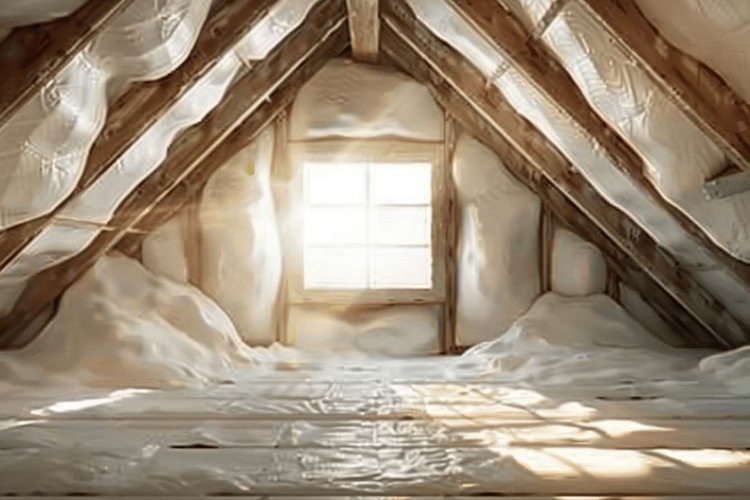Complete Roof Insulation Renovation: Everything You Need to Know
A complete roof insulation renovation involves updating or replacing your roof's thermal barrier system to improve energy efficiency and structural integrity. This comprehensive process requires careful planning, proper material selection, and understanding of various renovation steps to ensure optimal performance. Whether you're dealing with outdated insulation or planning a complete roof overhaul, proper insulation renovation can significantly reduce energy costs and enhance your home's comfort levels throughout the year.

What Are the Essential Roof Renovation Steps?
The roof renovation process begins with a thorough assessment of your existing roof structure and insulation condition. Professional contractors typically start by examining the roof deck, checking for any structural damage, moisture issues, or pest infestations that could compromise the new insulation system. The next step involves removing old insulation materials, which may include outdated fiberglass batts, deteriorated foam boards, or damaged reflective barriers.
Following the removal phase, contractors prepare the roof surface by sealing air leaks, repairing any structural issues, and installing proper vapor barriers where necessary. The installation of new insulation comes next, followed by the addition of protective coverings and proper ventilation systems. Finally, the process concludes with quality checks and performance testing to ensure the renovation meets current building standards and energy efficiency requirements.
How Do You Choose the Right Roof Insulation Material?
Selecting appropriate roof insulation material depends on your climate zone, roof type, and specific performance requirements. In India’s diverse climate conditions, materials like expanded polystyrene (EPS), extruded polystyrene (XPS), and polyurethane foam are commonly used for their excellent thermal resistance properties. Natural materials such as coconut fiber and recycled cotton are gaining popularity due to their eco-friendly characteristics and adequate insulation performance.
The R-value, which measures thermal resistance, is crucial when selecting insulation materials. For Indian climates, materials with R-values between R-15 to R-30 are typically recommended, depending on your specific regional requirements. Additionally, consider factors like moisture resistance, fire safety ratings, and long-term durability when making your selection. Some materials may require additional protective barriers or specific installation techniques to maintain their effectiveness over time.
What Types of Roof Insulation Panel Options Are Available?
Roof insulation panels come in various forms, each designed for specific applications and performance requirements. Rigid foam panels, including PIR (Polyisocyanurate) and PUR (Polyurethane) boards, offer excellent thermal performance and structural stability. These panels typically feature aluminum foil facings that provide additional radiant heat reflection, making them particularly suitable for hot climates.
Composite insulation panels combine multiple materials to maximize thermal and structural benefits. Sandwich panels with metal outer layers and foam cores provide both insulation and weather protection in a single system. Reflective insulation panels, featuring multiple layers of reflective surfaces and air spaces, are particularly effective in reducing radiant heat transfer. For retrofitting projects, flexible panel systems that can conform to existing roof contours offer practical installation advantages while maintaining insulation performance.
Understanding Installation Requirements and Techniques
Proper installation techniques are critical for maximizing insulation performance and ensuring long-term effectiveness. The installation process varies depending on whether you’re dealing with a new construction project or retrofitting an existing roof. For new installations, insulation panels are typically installed over the roof deck before roofing materials are applied, creating a continuous thermal barrier.
Retrofitting existing roofs may require different approaches, including installing insulation from the interior side or adding external insulation layers. Proper sealing of joints and edges prevents thermal bridging and air infiltration, which can significantly reduce insulation effectiveness. Professional installation ensures compliance with local building codes and manufacturer specifications, which is essential for maintaining warranty coverage and optimal performance.
Cost Considerations and Budget Planning
Roof insulation renovation costs vary significantly based on material selection, roof size, and project complexity. In India, basic insulation materials like fiberglass batts may cost between ₹40-80 per square foot, while premium options like polyurethane foam panels can range from ₹120-200 per square foot. Labor costs typically add another ₹50-100 per square foot, depending on installation complexity and regional wage rates.
| Material Type | Cost Range (per sq ft) | R-Value | Lifespan |
|---|---|---|---|
| Fiberglass Batts | ₹40-80 | R-11 to R-38 | 15-20 years |
| EPS Foam Panels | ₹80-120 | R-15 to R-25 | 20-25 years |
| Polyurethane Foam | ₹120-200 | R-20 to R-35 | 25-30 years |
| Reflective Panels | ₹60-100 | R-10 to R-20 | 15-25 years |
Prices, rates, or cost estimates mentioned in this article are based on the latest available information but may change over time. Independent research is advised before making financial decisions.
Maintenance and Long-term Performance
Regular maintenance ensures your renovated roof insulation continues performing at optimal levels throughout its intended lifespan. Annual inspections should check for signs of moisture intrusion, pest damage, or settling that could compromise insulation effectiveness. Pay particular attention to areas around roof penetrations, joints, and edges where air leaks commonly develop over time.
Proper ventilation systems work in conjunction with insulation to prevent moisture buildup and maintain thermal performance. Ensure that soffit vents, ridge vents, and exhaust fans remain unobstructed and functional. Address any roofing issues promptly to prevent water damage that could compromise your insulation investment and lead to costly repairs.
A well-executed roof insulation renovation provides significant long-term benefits including reduced energy costs, improved indoor comfort, and enhanced property value. By understanding the renovation process, selecting appropriate materials, and ensuring proper installation, homeowners can achieve optimal thermal performance that lasts for decades. Professional consultation and quality materials represent worthwhile investments that deliver substantial returns through energy savings and improved living conditions.




